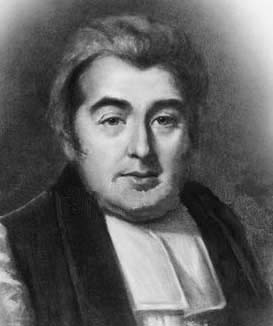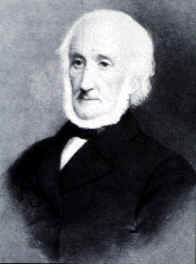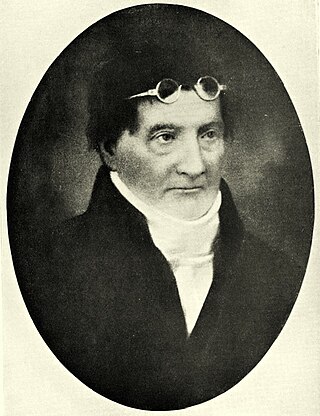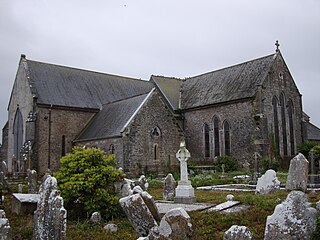
John Mortimer Brinkley was the first Royal Astronomer of Ireland and later Bishop of Cloyne. He was President of the Royal Irish Academy (1822–35), President of the Royal Astronomical Society (1831–33). He was awarded the Cunningham Medal in 1818, and the Copley Medal in 1824.

Cynthia Evelyn Longfield was an Anglo-Irish entomologist and explorer and the first woman member of the Entomological Society. She was an expert on the dragonfly and was nicknamed "Madame Dragonfly". She travelled extensively and published The Dragonflies of the British Isles in 1937. She worked as a research associate at the Natural History Museum, London, and was the expert on the dragonflies there, particularly on African species.

George Petrie was an Irish painter, musician, antiquarian and archaeologist of the Victorian era who was instrumental in building the collections of the Royal Irish Academy and National Museum of Ireland.
Philip Perceval Graves was an Anglo-Irish journalist and writer. While working as a foreign correspondent of The Times in Constantinople, he exposed The Protocols of the Elders of Zion as an antisemitic plagiarism, fraud and hoax.

Diarmuid O'Sullivan is an Irish hurling coach and hurler who plays for Cork Premier Championship club Cloyne. He played for the Cork senior hurling team for 12 years, during which time he usually lined out as a full-back. A fan favourite who was noted for his swashbuckling style during his inter-county career, O'Sullivan is considered a "Cork legend".

Edward Bunting was an Irish musician and folk music collector active in Belfast.

The Book of Lismore, also known as the Book of Mac Carthaigh Riabhach, is a late fifteenth-century Gaelic manuscript that was created at Kilbrittain in County Cork, Ireland, for Fínghean Mac Carthaigh, Lord of Carbery (1478–1505). Defective at beginning and end, 198 leaves survive today, containing a miscellany of religious and secular texts written entirely in Irish.
Events from the year 1809 in Ireland.
Events from the year 1796 in Ireland.

James Henthorn Todd was a biblical scholar, educator, and Irish historian. He is noted for his efforts to place religious disagreements on a rational historical footing, for his advocacy of a liberal form of Protestantism, and for his endeavours as an educator, librarian, and scholar in Irish history.

St. Colman's Cathedral, Cloyne is a cathedral of the Church of Ireland in Cloyne, County Cork in Ireland. It is in the ecclesiastical province of Dublin. Originally a Roman Catholic cathedral, it was converted to an Anglican cathedral in 1678.
John Fitzedmund Fitzgerald was the hereditary Seneschal of Imokilly, an Irish nobleman of the originally Anglo-Welsh-Norman FitzGerald dynasty in the province of Munster.

Reverend Charles Bunworth was an Irish harpist and the Church of Ireland rector of Buttevant, County Cork. Born in 1704, he graduated from Trinity College, Dublin with an M.A. in Divinity Studies in 1730 and was ordained the following year. He was a renowned patron of the arts and a skilled harpist. He died in 1772 at the age of 68 and is buried in the churchyard of St John’s, Buttevant.
Scéla Conchobair maic Nessa or the Tidings of Conchobar mac Nessa is a title invented by Whitley Stokes for a short prose piece from the Ulster Cycle preserved in the 12th-century manuscript, the Book of Leinster. It is interpolated with lore not found elsewhere regarding the branches (halls) of the Ulster court at Emain Macha and the shields of the Ulstermen.
The Book of Fermoy is a medieval Irish text dated to the 14th to 16th century AD. The majority of the book consists of a compendium of poems, historical tracts and genealogies related to the medieval Roche family compiled in the 1450s and 1460s.
Marriott Robert Dalway was an Irish politician. Although primarily as an Irish Liberal Party member, various sources also designate him as Conservative or Liberal-Conservative.

The Domnach Airgid is an 8th-century Irish wooden reliquary. It was considerably reworked between the 13th and 15th centuries and became a cumdach or "book shrine", when its basic timber structure was reinforced and decorated by elaborate silver-gilt metalwork. Its front cover was enhanced by gilded relief showing Jesus in "Arma Christi", alongside depictions of saints, angels, and clerics, in scenes imbued with complex iconography. It is thus considered a mixture of the early Insular and later International Gothic styles.

Charlotte Olivia Milligan Fox was an Irish composer, folk music collector and writer.
John Jephson was Archdeacon of Cloyne from 1735 until his death.

The Belfast Harp Society (1808-1813) and its successor, the Irish Harp Society (1819-1839), were philanthropic associations formed in the town of Belfast, Ireland, for the purpose of sustaining the music and tradition of itinerant Irish harpists, and secondarily, of promoting the study of the Irish language, history, and antiquities. For its patronage, the original society drew upon a diminishing circle of veterans of the patriotic and reform politics of the 1780s and '90s, among them several unrepentant United Irishmen. In its sectarian division, Belfast became increasingly hostile to Protestant interest in distinctive Irish culture. The society reconvened as the Irish Harp Society in 1819 only as a result of a large and belated subscription raised from expatriates in India. Once that source was exhausted, the new society ceased its activity.












